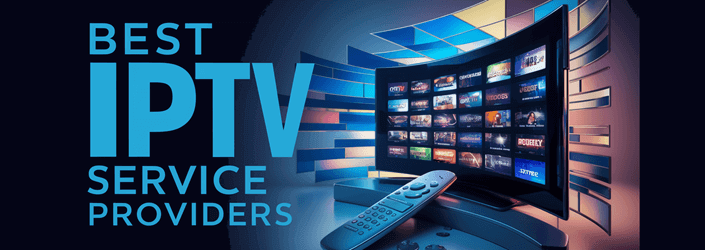as i continue to learn this am i missing anything that is hd on ku band? is it worth buying an hd receiver or is it just junk channels transmitting hd on ku. i know cband has hd but what might be there including feeds that are hd on ku?

i never knew what 4:2:2 but i will look for a card that does that codec.
Brilliantly said, B.J.!The PC receiver cards don't have anything to do with the capability of playing 4.2.2 or HD channels. If the card can tune the mux, it will handle 4.2.2 or HD or MPEG4 no differently than regular SD MPEG2 4.2.0. Even the oldest PC receiver cards can handle 4.2.2, HD and MPEG4. It is the software that determines whether you can play these modes, not the card. Most people don't use the software that comes with PC receiver cards, so the only issue is whether the card is compatable with the 3rd party software. Where the card does come into play is what it can lock. Personally, most of the time I use my old Twinhan 1020a card. I generally use it with TSREADER, and view 4.2.0, 4.2.2, SD, HD, MPEG2, MPEG4 either by streaming to VLC or to external devices like ROKU, PopCornHour or the Azbox, however the 1020a only tunes DVB-S signals. If you want to tune DVB-S2 signals, you will need a more modern, more expensive card. Also, some cards like the 1020a will tune DSS signals, some other cards like the Genpix will also tune DCII and turbo QPSK/8PSK modes. So basically the card just determines what transponders you can lock, but doesn't effect the ability to view 4.2.2 or HD or other video modes. That's done with software.
EDIT: One other place where the card's specs are important is the SR's it can handle. Some cards can't tune some modes at high (>30000) SR values. Other cards have issues below 2000 SR values. But again this just determines what muxes it can lock, not what video modes can be played.
The PC receiver cards don't have anything to do with the capability of playing 4.2.2 or HD channels. If the card can tune the mux, it will handle 4.2.2 or HD or MPEG4 no differently than regular SD MPEG2 4.2.0. Even the oldest PC receiver cards can handle 4.2.2, HD and MPEG4. It is the software that determines whether you can play these modes, not the card. Most people don't use the software that comes with PC receiver cards, so the only issue is whether the card is compatable with the 3rd party software. Where the card does come into play is what it can lock. Personally, most of the time I use my old Twinhan 1020a card. I generally use it with TSREADER, and view 4.2.0, 4.2.2, SD, HD, MPEG2, MPEG4 either by streaming to VLC or to external devices like ROKU, PopCornHour or the Azbox, however the 1020a only tunes DVB-S signals. If you want to tune DVB-S2 signals, you will need a more modern, more expensive card. Also, some cards like the 1020a will tune DSS signals, some other cards like the Genpix will also tune DCII and turbo QPSK/8PSK modes. So basically the card just determines what transponders you can lock, but doesn't effect the ability to view 4.2.2 or HD or other video modes. That's done with software.
EDIT: One other place where the card's specs are important is the SR's it can handle. Some cards can't tune some modes at high (>30000) SR values. Other cards have issues below 2000 SR values. But again this just determines what muxes it can lock, not what video modes can be played.
Another thing to consider is that MPEG-4 requires a far more powerful computer (or hardware acceleration on the PC's video card). Most semi-modern PCs will play 18 megabit MPEG-2, but the same bitrate in MPEG-4 might be unplayable. In these cases, hardware accelerated video cards can be your best friend...
I have never had much success using VLC to play back MPEG-4/AVC. The PC I'm currently using has an ATI 1300 video card, which does not have hardware accelerated MPEG-4, but I get fairly acceptable results on low bitrates using Media Player Classic Home Cinema. With an ATI HD2600 or higher video card, I would be able to play back AVC without issues. This is an old AMD Sempron 1.5 ghz PC.
Don't know if this is 100% relevant...
I used VLC on my mac mini and found the 1080p content would sputter away, then I found this article on how to "tune" it.
» Play 1080p Content on Mac Mini @ mr. Obsession
Anyway to make a long story short it actually improved my HD experience.
....
I have never had much success using VLC to play back MPEG-4/AVC. The PC I'm currently using has an ATI 1300 video card, which does not have hardware accelerated MPEG-4, but I get fairly acceptable results on low bitrates using Media Player Classic Home Cinema. With an ATI HD2600 or higher video card, I would be able to play back AVC without issues. This is an old AMD Sempron 1.5 ghz PC.
Don't know if this is 100% relevant...
I used VLC on my mac mini and found the 1080p content would sputter away, then I found this article on how to "tune" it.
» Play 1080p Content on Mac Mini @ mr. Obsession
Anyway to make a long story short it actually improved my HD experience.
Anyway, I'm still confused relative to how to use your video card's hardware acceleration with VLC. If anyone is knowledgeable about that, I'd appreciate more discussion about that.
Thanks. Interesting. The FFmpeg menu looks different in the PC version of VLC, and doesn't have the options mentioned, but I see several other potential settings there that I haven't messed with. Thanks.
Yep, its there. Go to Tools > Preferences > Input Codecs & Settings and scroll down. See screen print.

Limited time offer

